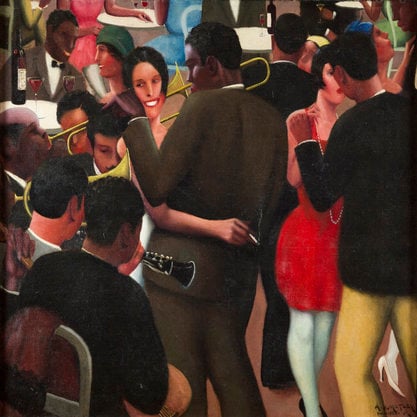Article
Harlem Nightclubs By Templeton, Melissa
Article
In the 1920s and 1930s, Harlem became a major hub of New York City nightlife and a prolific space for African American artistic creation. It was in Harlem’s nightclubs (also known as cabarets) that big band jazz became a sensation and where theatrical dance forms like tap dance, and social dances like the lindy hop and the Charleston, gained widespread popularity. These artistic developments contributed to an emerging modern black identity among the intellectuals and artists of the Harlem Renaissance. While the artists in these nightclubs tended to be African American, the more elaborate and expensive clubs catered almost exclusively to white patrons; black artists were often faced with the challenge of catering to white expectations while creatively developing their own art. The music and dance that emerged in these nightclubs also became the inspiration of many black modernist authors.




